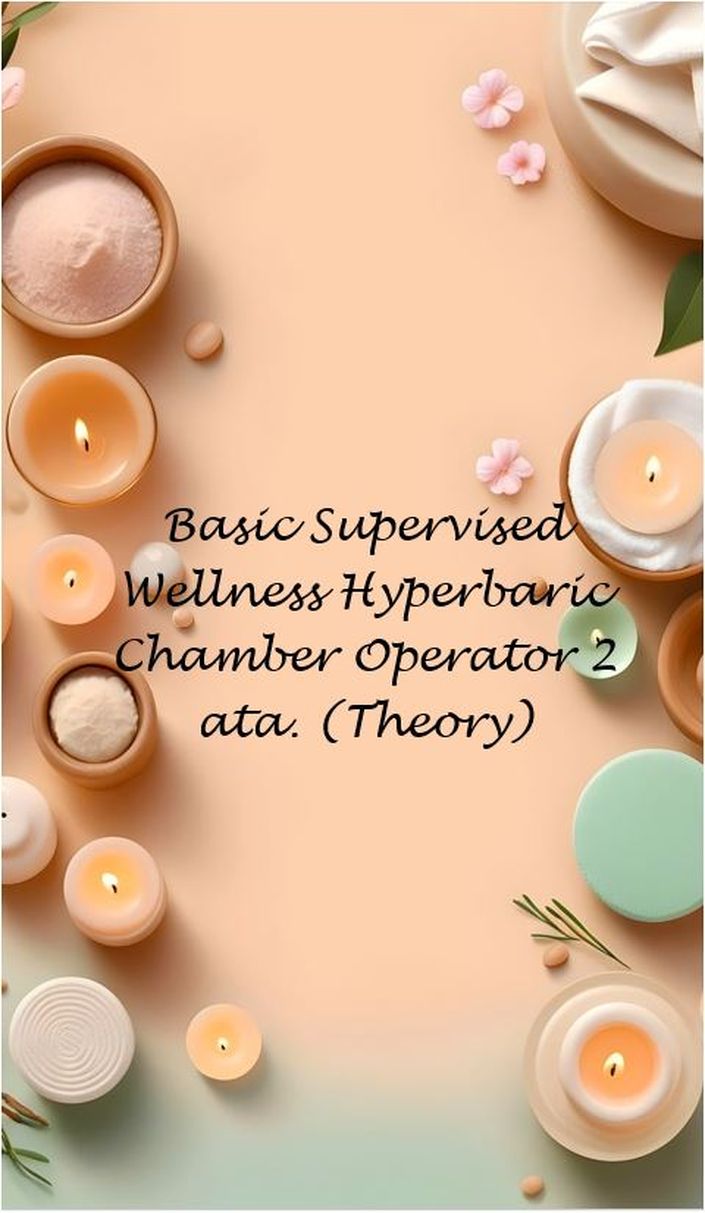
Getting to Grips With The Theory of Hyperbaric Oxygen Therapy
In this entry level introductory module, the knowledge development material delves into the mechanisms that make this modality work. In the following pages you will discover the physics and physiology that underpins the various mechanisms that make this such an effective therapy. You will also learn some examples of what sorts of conditions may benefit from therapy. The work intends to introduce candidates to the concepts behind the therapy and provide a stable platform on which to build.
This introductory overview of hyperbaric oxygen therapy is a preparatory module that lays the groundwork for understanding the subject. It is not mandatory if you are pursuing the basic or foundation level work, as there is overlap in content. However, the module includes a valuable reference section listing all source materials used. It also includes an fairly comprehensive lesson on oxygen toxicity which is not included in further modules. It is still a good idea for all staff to progress through each level in turn.
- Each lesson is followed by a knowledge review quiz to reinforce learning.
- The quizzes are multiple-choice and designed to prompt critical thinking.
- The material encourages recall rather than rote memorization.
Hayden Dunstan, the program facilitator and author, boasts 30 years of diving experience along with numerous certifications in diving operations, hyperbaric supervision, and instruction.
- Hayden is well-versed in regulatory requirements for hyperbaric operations.
- He offers to engage with individuals from medical, technical, and political backgrounds on the subject.
The program aims to equip learners with foundational knowledge of hyperbaric chamber operations in a clinical setting. The curriculum is suitable for all personnel interested in hyperbaric therapy, including chamber operators, divers, medical professionals, and technical experts.
- Prospective chamber operators should be 18 years or older, numerate, and literate.
- There are no specific entry criteria, but prior diving experience expedites progress.
- Upon completion of the material and successful assessment, learners receive a certificate of completion.
For those aiming to delve deeper, the program offers the possibility of advancing to basic, foundation, intermediate, or supervisor levels in hyperbaric knowledge. Practical endorsement can be added to the certificate upon arrangement.

Monoplace Chamber
The example shows a large capacity monoplace chamber fitted for up to 18 occupants.

Looking in From the Outside
Small diameter glass conical viewports are more common on older chambers with acrylic flat plates being more common nowadays.

Down to the Bones
A bare bones view under the floor plates.
Example Curriculum
- Introduction to Material, Facilitator and Greeting. (3:25)
- Lesson 1 - Definition and Preamble (4:02)
- Lesson 2 - Diving Physics and Physiology (4:37)
- Lesson 3 - The Hyperbaric Environment (2:59)
- Lesson 4 - Oxygen Tolerance (Toxicity) (3:36)
- Lesson 5 - Cellular Metabolism (4:52)
- Lesson 6 - Wound Healing (4:16)
- Lesson 7 - Dosage (3:50)
- Lesson 8 - Other Conditions (4:57)
- Lesson 9 - Side Effects and Contraindications (5:49)
- Lesson 10 - Prohibited Items and Safety (4:19)
- Lesson 11 - Closing Thoughts (1:59)
- References
The Author: Hayden Dunstan
Hayden taking up the attendant position on a Scott BIBS system.








